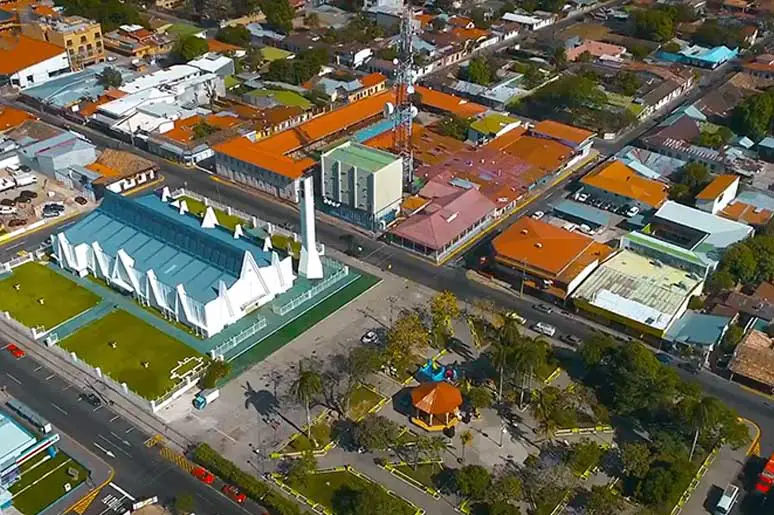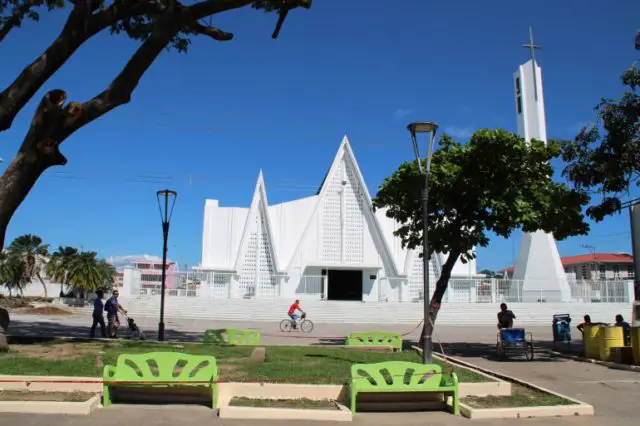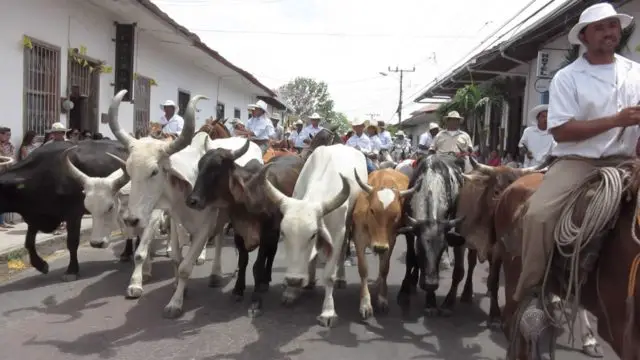Liberia is a city in Costa Rica, capital of the province of Guanacaste and the homonymous canton. Located 215 kilometers northwest of San José and 75 kilometers south of the border with Nicaragua, Liberia is an important center of transport, agricultural trade, and more recently a center of tourism-related services, pillar of the Guanacaste economy.

In Liberia, there is the Daniel Oduber Quirós International Airport, the second most important in Costa Rica and the ninth in Central America by passenger movement. The district located in the canton of the same name, measures 561.57 km² and has an estimated population of 53,381 inhabitants (2010). Of these, about 45,000 live in the metropolitan area of the city of Liberia, one of the largest urban agglomerations in the country outside the Central Valley.
History.
Liberia was founded as a hermitage without any legal or formal act of foundation, on September 4, 1769. It was located in a strategic place where the known roads of the municipalities of Rivas, Bagaces and Nicoya cross. The hermitage was used mostly as a resting place for travelers. The gigantic trees in the area, popularly called “Guanacaste” (Enterolobium cyclocarpum), provided shade for travelers and livestock in the area that eventually became known as Guanacaste.
This region shares a common history between Nicaragua and Costa Rica. In 1812 the Cádiz Royal Courts created the provinces of Nicaragua and Costa Rica. Both countries gained their independence from Spain on September 15, 1821, after the Spanish defeat in the Mexican War of Independence.
After the brief duration of the First Mexican Empire (1821-1823), Costa Rica (which was considered a minor provincial post at that time) became part of the newly created Federal Republic of Central America in 1823. The Partido de Nicoya served as an administrative unit for the Federal Republic of Central America. The “Partido” composed most of the territory that today is the province of Guanacaste, Costa Rica. Most of the area, such as the settlements of Nicoya and Santa Cruz, established close economic ties to the Costa Rican territory, as well as the growing port of Puntarenas.
Meanwhile, the Guanacaste settlement (modern-day), held closer economic ties to the Nicaraguan territory, such as the city of Rivas. Under the leadership of the towns of Nicoya and Santa Cruz, the Partido de Nicoya voted in annexing to Costa Rica on July 25, 1824, while the inhabitants of Guanacaste chose to remain part of Nicaragua.
In 1826, after years of conflict, the Congress of the Federal Republic of Central America added Guanacaste (today Liberia) to Costa Rica. The town of Guanacaste grew in importance and gradually surpassed the town of Nicoya as the most important settlement in the area. On July 23, 1831, the Guanacaste settlement was given the title of Villa de Guanacaste. Only a few years later on September 3, 1836, it was given the name of Guanacaste City.
In 1838, after the Federal Republic of Central America began to dissolve, Costa Rica formally withdrew and a sovereign state was proclaimed. On December 7, 1848, Costa Rica divided its national territory into provinces, cantons, and districts. The territory that encompassed Nicoya, Bagaces, Santa Cruz, Guanacaste (Liberia) and Cañas became part of the newly formed province of Guanacaste. On May 30, 1854, a government decree changed the name of the city of Guanacaste to Liberia. The name of the province of Guanacaste was changed to Moravia in honor of the then president of Costa Rica Juan Rafael Mora Porras.
In August 1859, Juan Rafael Mora Porras
was overthrown in a coup d’état orchestrated by Dr. José María Monte Alegre. On
June 20, 1860, during the administration of the new
President of Costa Rica, Dr. José María Monte Alegre, the name of the province
was changed again from Moraría to the definitive Guanacaste. Monte Alegre
maintained the name of the city of Liberia but saw not fit to maintain a
province by the name of a political enemy.
The importance of Liberia continued to grow and became an important center for agriculture and livestock. The construction of the Inter-American Highway further increased the importance of Liberia and contributed to the growth of trade inside and outside the city. At the end of the 20th century, Liberia became an important stopping point for tourists traveling to the beaches of the Pacific Coast of Guanacaste.

Currently, Liberia and the province of Guanacaste accept July 25, 1824, as the day of their annexation to Costa Rica. Liberia is often called by its inhabitants the “White City”, due to the white gravel used to build the streets of the city and colonial whitewashed colonial houses that once populated a large part of the city. The Liberia River bears the same name as the city and is the main watercourse in the province of Guanacaste.
Economy and places to visit.

Liberia is the most important regional center in northwestern Costa Rica. The city center has a modern church and like in many Costa Rican towns, it has a park surrounded by shops and restaurants. Liberia is also home to an exhibition that takes place in July, which commemorates the annexation of the province of Guanacaste, on July 25, 1824.
Among the attractions in the vicinity are:
African Safari Adventure Park, located 4 kilometers south of the city;
Sabanero Museum, located in the central part of the city, which includes buildings from the 19th century;
Papagayo Peninsula, located in the canton of Liberia where you can find numerous beaches such as Iguanita, Blanca, Prieta, Nacascolo, Nacascolote, Virador, Huevos Bay, Cabuya, Carbonar and Naranjo Beach (Roca Bruja);
La Casona de Santa Rosa, a preserved colonial construction located in the canton of Liberia; Daniel Oduber Quirós International Airport, located six kilometers west of the city, following the road to Nicoya;
Rincon de la Vieja National Park, located just northeast of Liberia. It has an active volcano, hot springs, clay pot artisans, and numerous waterfalls and rivers that can be found over many kilometers on the park’s trails.
In Liberia, there are two main shopping centers, the Mall Centro Plaza Liberia and Plaza Santa Rosa. There are also hot springs located southeast of Liberia, along the western slopes of the Mira valleys and Rincon de la Vieja volcanoes.
Cattle Ranching Tradition of the Liberians.
The famous and traditional festivities are celebrated every third of March in Liberia and bear the name “Topes De Toros” (Bull toping). This tradition consists of the “Tope” that takes place in the Liberia River, at the Puente Real (Bridge). At noon, the bulls brought from the haciendas to be mounted at the festivities, are delivered by the cattle ranchers to the bullfighters of the Festival Committee and thus start the “parading of the bulls” through the city to the cattle rails, accompanied by musical bands and masquerades, with the custody of cowboys on horseback.

This tradition dates back to the first third of the nineteenth century and among its most important activities is the “Monta de Toros” (riding the bulls)”, closely linked to the “Topes de Toros”. These popular traditions are deeply rooted and take place every year and are accompanied by local musical, and gastronomic expressions, also by handicrafts related to cattle herding and horseback riding. It has been officially declared as a manifestation of the Liberian and Guanacaste intangible cultural heritage.


thanks ashley for your comment, we really appreciate it